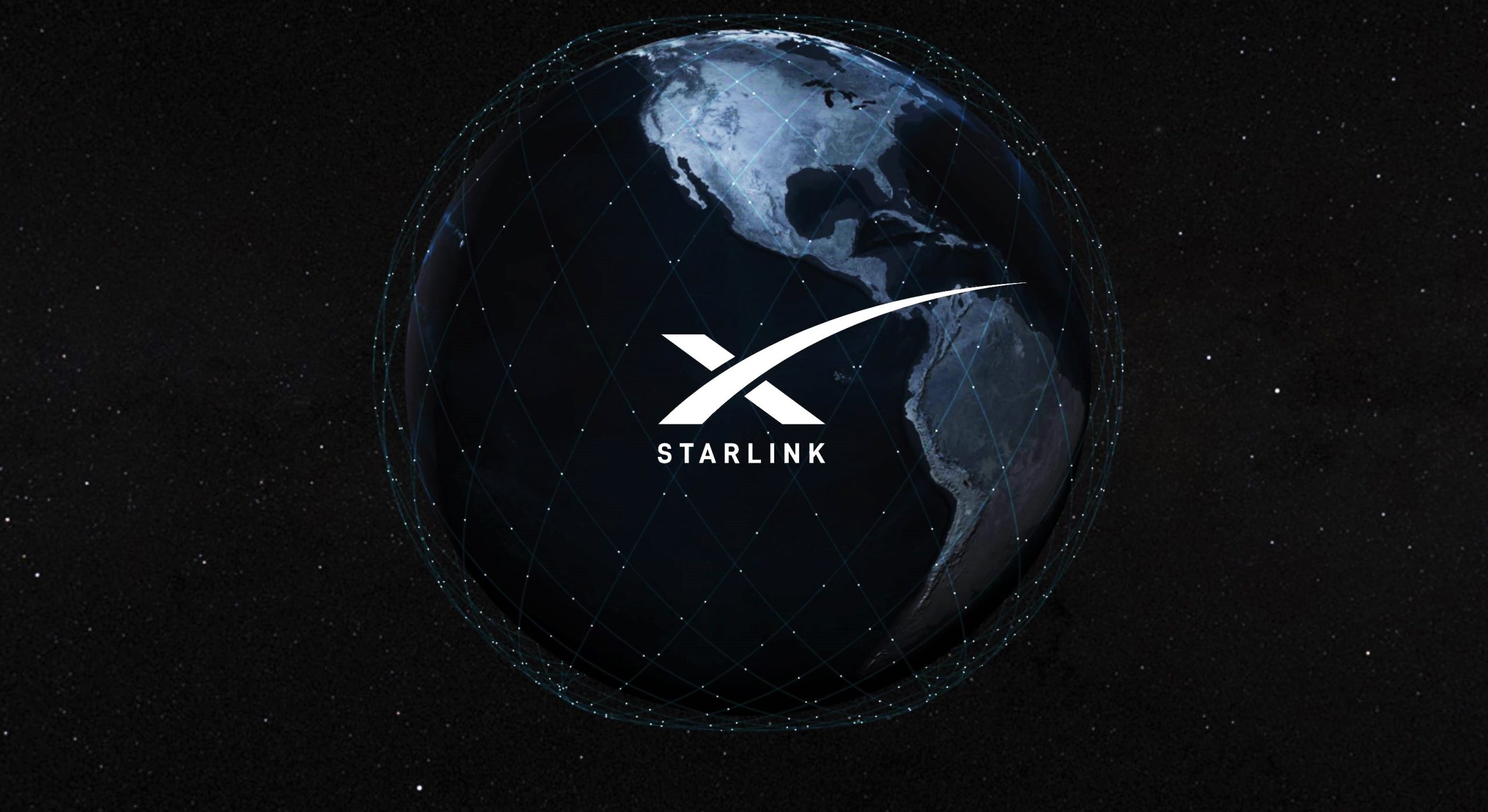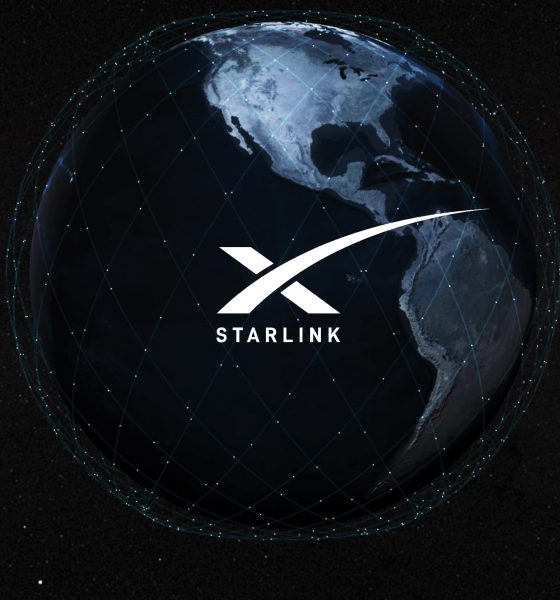

News
SpaceX reportedly refused to move Starlink satellite, provoking odd space agency tweets [updated]
The European Space Agency (ESA) has published an unusual press release – in the form of a Twitter thread – specifically blaming SpaceX’s nascent Starlink constellation for a collision avoidance maneuver recently performed by Aeolus, a scientific spacecraft in low Earth orbit (LEO). SpaceX reportedly refused to move its Starlink satellite, triggering the maneuver.
SpaceX launched an extensive Starlink beta test on May 23rd, 2019, placing an unprecedented 60 satellites in LEO. Discussed earlier today on Teslarati, 50 of those 60 satellite prototypes have reached their final 550 km (340 mi) orbits and are functioning as intended, while 5 have paused their orbit-raising, 3 have been declared dead, and 2 are intentionally lowering their orbits as an end-of-life simulation.
Update: SpaceX has released an official statement on the matter.
“Our Starlink team last exchanged an email with the Aeolus operations team on August 28, when the probability of collision was only in the 2.2e-5 range (or 1 in 50k), well below the 1e-4 (or 1 in 10k) industry standard threshold and 75 times lower than the final estimate. At that point, both SpaceX and ESA determined a maneuver was not necessary. Then, the U.S. Air Force’s updates showed the probability increased to 1.69e-3 (or more than 1 in 10k) but a bug in our on-call paging system prevented the Starlink operator from seeing the follow on correspondence on this probability increase – SpaceX is still investigating the issue and will implement corrective actions. However, had the Starlink operator seen the correspondence, we would have coordinated with ESA to determine best approach with their continuing with their maneuver or our performing a maneuver.”
–SpaceX, 09/03/2019
Additionally, Starlink satellites have already reportedly performed 16 autonomous collision avoidance maneuvers (sans human operator interference) and SpaceX confirmed that the satellite ESA was worried about is fully operational while it continues its deorbit maneuver.
On one hand, ESA’s description of events is bizarre and dubious, at points. ESA Operations tweeted that “it is very rare to perform collision avoidance maneuvers with active satellites”, while the very next tweet stated that “ESA performed 28 collision avoidance maneuvers [in 2018]”, meaning that the procedure is roughly biweekly for ESA alone.
Meanwhile, Matt Desch – CEO of Iridium, the owner and operator of one of the largest LEO constellations ever flown – stated that its Iridium NEXT satellites perform similar maneuvers weekly, without the need to “put out a press release to say who [Iridium] maneuvered around”. In simple terms, collision avoidance maneuvers are extremely common and extremely routine and are a fundamental part of operating satellites on orbit – be it one, ten, or ten thousand.
However, spaceflight journalist Jonathan O’Callaghan was told by sources in ESA that the space agency had directly contacted SpaceX with concerns about a possible Starlink-Aeolus collision and the company refused to move their spacecraft in cooperation. This left ESA’s Aeolus to perform the maneuver.
From the perspective of O’Callaghan’s sourced information, SpaceX certainly appears to be in the wrong in this case. However, the current story is extremely patchy, and more information is needed to paint a true-to-life picture of events. Was SpaceX’s refusal to move based on an inability to move one of the two satellites it is intentionally deorbiting? Is the company simply confident in what it has described as a suite of autonomous collision avoidance hardware and software installed on each Starlink satellite?
Either way, if SpaceX actually is/was as terse and uncommunicative as O’Callaghan’s sources have painted the company, it is an extremely bad look. For SpaceX to successfully operate hundreds of Starlink satellites, let alone its constellation’s full ~11,800, good spaceflight stewardship and hand-in-hand cooperation with other major (and minor) operators is an absolute necessity. If SpaceX acts like the bully in the room and simply ignores or avoids cooperation and fails to take responsibility and help maintain current standards of collision avoidance, the company will very quickly find itself surrounded by newly made enemies like ESA.
Teslarati has reached out to SpaceX for comment and will update this article with all relevant information.
Check out Teslarati’s Marketplace! We offer Tesla accessories, including for the Tesla Cybertruck and Tesla Model 3.

News
Waymo sues Santa Monica over order to halt overnight charging sessions
In its complaint, Waymo argued that its self-driving cars’ operations do not constitute a public nuisance, and compliance with the city’s order would cause the company irreparable harm.

Waymo has filed a lawsuit against the City of Santa Monica in Los Angeles County Superior Court, seeking to block an order that requires the company to cease overnight charging at two facilities.
In its complaint, Waymo argued that its self-driving cars’ operations do not constitute a public nuisance, and compliance with the city’s order would cause the company irreparable harm.
Nuisance claims
As noted in a report from the Los Angeles Times, Waymo’s two charging sites at Euclid Street and Broadway have operated for about a year, supporting the company’s growing fleet with round-the-clock activity. Unfortunately, this has also resulted in residents in the area reportedly being unable to sleep due to incessant beeping from self-driving taxis that are moving in and out of the charging stations around the clock.
Frustrated residents have protested against the Waymos by blocking the vehicles’ paths, placing cones, and “stacking” cars to create backups. This has also resulted in multiple calls to the police.
Last month, the city issued an order to Waymo and its charging partner, Voltera, to cease overnight operations at the charging locations, stating that the self-driving vehicles’ activities at night were a public nuisance. A December 15 meeting yielded no agreement on mitigations like software rerouting. Waymo proposed changes, but the city reportedly insisted that nothing would satisfy the irate residents.
“We are disappointed that the City has chosen an adversarial path over a collaborative one. The City’s position has been to insist that no actions taken or proposed by Waymo would satisfy the complaining neighbors and therefore must be deemed insufficient,” a Waymo spokesperson stated.
Waymo pushes back
In its legal complaint, Waymo stated that its “activities at the Broadway Facilities do not constitute a public nuisance.” The company also noted that it “faces imminent and irreparable harm to its operations, employees, and customers” from the city’s order. The suit also stated that the city was fully aware that the Voltera charging sites would be operating around the clock to support Waymo’s self-driving taxis.
The company highlighted over one million trips in Santa Monica since launch, with more than 50,000 rides starting or ending there in November alone. Waymo also criticized the city for adopting a contentious strategy against businesses.
“The City of Santa Monica’s recent actions are inconsistent with its stated goal of attracting investment. At a time when the City faces a serious fiscal crisis, officials are choosing to obstruct properly permitted investment rather than fostering a ‘ready for business’ environment,” Waymo stated.
News
Tesla FSD v14.2.2 is getting rave reviews from drivers
So far, early testers have reported buttery-smooth drives with confident performance, even at night or on twisty roads.

Tesla Full Self-Driving (Supervised) v14.2.2 is receiving positive reviews from owners, with several drivers praising the build’s lack of hesitation during lane changes and its smoother decision-making, among others.
The update, which started rolling out on Monday, also adds features like dynamic arrival pin adjustment. So far, early testers have reported buttery-smooth drives with confident performance, even at night or on twisty roads.
Owners highlight major improvements
Longtime Tesla owner and FSD user @BLKMDL3 shared a detailed 10-hour impression of FSD v14.2.2, noting that the system exhibited “zero lane change hesitation” and “extremely refined” lane choices. He praised Mad Max mode’s performance, stellar parking in locations including ticket dispensers, and impressive canyon runs even in dark conditions.
Fellow FSD user Dan Burkland reported an hour of FSD v14.2.2’s nighttime driving with “zero hesitations” and “buttery smooth” confidence reminiscent of Robotaxi rides in areas such as Austin, Texas. Veteran FSD user Whole Mars Catalog also demonstrated voice navigation via Grok, while Tesla owner Devin Olsen completed a nearly two-hour drive with FSD v14.2.2 in heavy traffic and rain with strong performance.
Closer to unsupervised
FSD has been receiving rave reviews, even from Tesla’s competitors. Xpeng CEO He Xiaopeng, for one, offered fresh praise for FSD v14.2 after visiting Silicon Valley. Following extended test drives of Tesla vehicles running the latest FSD software, He stated that the system has made major strides, reinforcing his view that Tesla’s approach to autonomy is indeed the proper path towards autonomy.
According to He, Tesla’s FSD has evolved from a smooth Level 2 advanced driver assistance system into what he described as a “near-Level 4” experience in terms of capabilities. While acknowledging that areas of improvement are still present, the Xpeng CEO stated that FSD’s current iteration significantly surpasses last year’s capabilities. He also reiterated his belief that Tesla’s strategy of using the same autonomous software and hardware architecture across private vehicles and robotaxis is the right long-term approach, as it would allow users to bypass intermediate autonomy stages and move closer to Level 4 functionality.
News
Elon Musk’s Grok AI to be used in U.S. War Department’s bespoke AI platform
The partnership aims to provide advanced capabilities to 3 million military and civilian personnel.

The U.S. Department of War announced Monday an agreement with Elon Musk’s xAI to embed the company’s frontier artificial intelligence systems, powered by the Grok family of models, into the department’s bespoke AI platform GenAI.mil.
The partnership aims to provide advanced capabilities to 3 million military and civilian personnel, with initial deployment targeted for early 2026 at Impact Level 5 (IL5) for secure handling of Controlled Unclassified Information.
xAI Integration
As noted by the War Department’s press release, GenAI.mil, its bespoke AI platform, will gain xAI for the Government’s suite of tools, which enable real-time global insights from the X platform for “decisive information advantage.” The rollout builds on xAI’s July launch of products for U.S. government customers, including federal, state, local, and national security use cases.
“Targeted for initial deployment in early 2026, this integration will allow all military and civilian personnel to use xAI’s capabilities at Impact Level 5 (IL5), enabling the secure handling of Controlled Unclassified Information (CUI) in daily workflows. Users will also gain access to real‑time global insights from the X platform, providing War Department personnel with a decisive information advantage,” the Department of War wrote in a press release.
Strategic advantages
The deal marks another step in the Department of War’s efforts to use cutting-edge AI in its operations. xAI, for its part, highlighted that its tools can support administrative tasks at the federal, state and local levels, as well as “critical mission use cases” at the front line of military operations.
“The War Department will continue scaling an AI ecosystem built for speed, security, and decision superiority. Newly IL5-certified capabilities will empower every aspect of the Department’s workforce, turning AI into a daily operational asset. This announcement marks another milestone in America’s AI revolution, and the War Department is driving that momentum forward,” the War Department noted.








